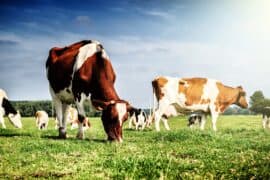Lucilia cuprina
(Lucilia cuprina)
Description
The species Lucilia cuprina, formerly named Phaenicia cuprina, is more commonly known as the Australian sheep blowfly. It belongs to the blow-fly family, Calliphoridae, and while some authorities combine the blow flies (Calliphoridae) and the flesh flies (Sarcophagidae) together into the family Metopiidae, distinguishable characteristics allow for the separation. Lucilia cuprina is a member of the order Diptera, has a pair of short but very strong membranous wings and a pair of hindwings reduced and modified to clublike balancers known as halteres. This adaptation distinguishes the true flies (Diptera) from the other orders with “fly” in their name, and serves as a sensory aid that acts as tiny gyroscopes or inertial navigation system. The mesothorax is much enlarged while the prothorax and metathorax are reduced. Blow flies are about the size of a house fly or a little larger, and though considered to be nuisances indoors are essential agents in the breakdown of organic matter. Most are metallic blue or green, and often have black gena, mostly white calypteres and orange yellow anterior thoracic spiracles. Lucilia cuprina also causes the condition known as 'sheep strike'. The female fly locates a sheep with an open wound in which she lays her eggs. The emerging larvae cause large lesions on the sheep, which may prove to be fatal.
Taxonomic tree:







